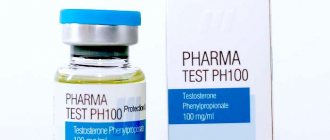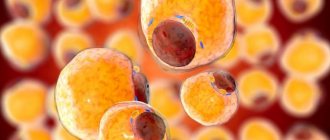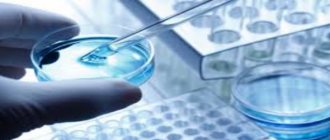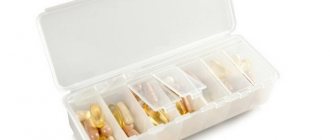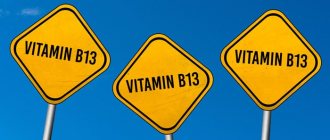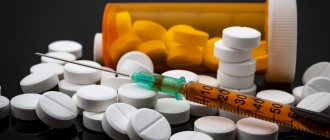- KtoNaNovenkogo
- FAQ
- Are you here
September 24, 2020
- Cholesterol is...
- Bad and good factions
- Blood cholesterol level
- What does cholesterol imbalance mean?
- How to correct the situation if the tests are bad
- What diet can lower cholesterol?
Hello, dear readers of the KtoNaNovenkogo.ru blog. The uninterrupted operation of the complex mechanism of our body is ensured by a number of processes taking place in it that are completely invisible at first glance.
Therefore, complex diseases are often detected only at a late stage or in a chronic clinical setting.
Only timely completion of preventive tests allows us to be aware of everything that is happening to our body.
One of these tests is a blood test for cholesterol .
Many manufacturers, when offering us their food products, label the packaging indicating the absence or presence of cholesterol.
Why is this substance so important for us, whether it is beneficial for the body or harmful - let’s take a closer look.
The principle of dividing cholesterol into good (HDL) and bad (LDL)
Fats enter the digestive tract and are broken down into triglycerides by pancreatic enzymes in the small intestine. In this form they are absorbed into the blood. But fats do not mix with liquids and cannot move freely through the bloodstream. In addition, they must be delivered to the liver. This is where the transformation of triglycerides into cholesterol occurs. Only in its form are lipids absorbed by tissues and used by them as building materials and a source of energy.
Once fats are broken down and enter the bloodstream, they combine with proteins. Transport complexes - lipoproteins - are formed. These are sacs with fat molecules, on their surface there are proteins - receptors. They are sensitive to liver cells. This allows them to accurately deliver fats to their destination. Any excess lipids from the bloodstream are transported to the liver in the same form.
These are “good” lipoproteins, also called “good” cholesterol. It is designated as HDL (high density lipoprotein).
There are also LDL and VLDL (low and very low density lipoproteins) - “bad” cholesterol. These are the same bags with fat molecules, but there are practically no receptor proteins on their surface. The purpose of prescribing low and very low density lipoproteins is different - tissue. They carry cholesterol, which is produced by the liver, throughout the body.
If for some reason the content of “bad” lipoproteins increases, they settle on the damaged walls of blood vessels. An atherosclerotic plaque forms.
When a vessel is damaged, microcracks and wounds form on its epithelium. Platelets instantly “stick around” the damage and form a clot. It stops the bleeding. This clot has the same charge as the LDL, so they are attracted to each other. Over time, the plaque hardens, damages the vessel a second time and disrupts the speed of blood flow. Therefore, LDL and VLDL are “bad”.
Sedimentation of LDL and VLDL (“bad” cholesterol) on the walls of blood vessels, which narrows their lumen.
When a vessel is too narrow, it is difficult for blood to pass through it. Blood flow slows down. The heart begins to work harder to compensate for the lack of speed with the intensity of the pressure. As a result, hypertension and pathological enlargement of the heart muscle develop. Heart failure develops with the risk of developing myocardial infarction.
Another dangerous consequence is that a blood clot can break off and travel through the bloodstream. It can get stuck in the narrow lumen of the vessels. In 82%, this is sudden death from a stroke (if the blood clot enters the brain) or from a heart attack (if it enters the heart).
Cholesterol is...
Cholesterol (lipophilic alcohol) is an organic substance necessary to ensure the metabolic processes of fats in the body.
From 80 to 85% of the total volume of the substance is synthesized inside the body - in the gastrointestinal tract and liver. The rest is replenished with food. Therefore, diet plays an important role in the balance of cholesterol in the blood.
For every kilogram of a person's total weight, the body synthesizes 2 grams of cholesterol. For example, if the weight is 65 kg. the body synthesizes 130 g. lipophilic substance.
Cholesterol in the body is a kind of “ building material ” that provides hormonal synthesis, the production of the required amount of vitamin D and the creation of a framework for the cellular bilayer.
A sufficient amount of it ensures normal cellular immune and nervous functions. Cholesterol imbalance causes the development of various pathological processes.
Norms of good and bad cholesterol in a blood test
Blood maintains the constancy of its composition and the level of individual components. Cholesterol standards are determined for each age separately; they also differ by gender. Women need more of it; cholesterol is the basis for the synthesis of estrogen.
After 40, the level of “bad” lipoproteins drops as metabolism slows down. “Good” cholesterol rises in order to promptly transport remaining fat to the liver for recycling.
In men
Table 1. Contents of various cholesterol fractions in men of different ages.
| Man's age | LDL concentration, mol /l | HDL concentration, mol /l |
| Up to 14 | 1,63–3,34 | 0,79-1,68 |
| 15-19 | 1,61-3,37 | 0,78-1,68 |
| 20-29 | 1,71-4,27 | 0,78-1,81 |
| 30-39 | 2,02-4,45 | 0,78-1,81 |
| 40 or more | 2,25-5,34 | 0,78-1,81 |
Among women
Table 2. Content of various cholesterol fractions in women by age.
| Woman's age | LDL concentration, mol /l | HDL concentration, mol /l |
| Up to 14 | 1,77-3,54 | 0,79-1,68 |
| 15-19 | 1,56-3,59 | 0,79-1,81 |
| 20-29 | 1,49-4,27 | 0,79-1,94 |
| 30-39 | 1,82-4,46 | 0,78-2,07 |
| 40 or more | 1,93-5,35 | 0,78-2,20 |
Norms
Total cholesterol in the blood - 3.0 - 5.0 mmol/l;
With the threat of atherosclerosis, total cholesterol rises to 7.8 mmol/l;
LDL in men - 2.25 - 4.82 mmol/l;
LDL in women - 1.92 - 4.51 mmol/l;
HDL in men - 0.72 - 1.73 mmol/l;
HDL in women - 0.86 - 2.28 mmol/l;
Triglycerides in men - 0.52 - 3.7 mmol/l;
Triglycerides in women - 0.41 - 2.96 mmol/l.
The most indicative is the ratio of HDL and LDL against the background of total cholesterol levels. In a healthy body, HDL is much higher than LDL.
What does the ratio of fractions indicate?
The likelihood of developing heart and vascular diseases is assessed by the ratio of total cholesterol and HDL. This is the atherogenicity index. It is calculated based on blood test data.
To calculate the coefficient, you need to subtract the indicator of “good” lipoproteins from the total cholesterol concentration in the blood test. The remaining figure is divided again by the PAP. The resulting value is the atherogenicity index (coefficient).
Ideally, it should be equal to 2-3; if the indicator is underestimated, the doctor will look for a concomitant serious illness. It affected lipid imbalance. But there is no likelihood of developing atherosclerosis with an underestimated coefficient.
If the resulting number is higher than normal, then there is a risk of the formation of atherosclerotic plaques and cardiovascular diseases. With an indicator of 3-5, the risk is assessed as medium. It is enough to follow a diet and increase physical activity to bring the body back to normal. When the atherogenicity coefficient is greater than 5, atherosclerosis is present and progresses. The patient is concerned about hypertension and the initial form of heart failure.
Determination of the atherogenic coefficient according to Friedwald
Using the Friedwald method, the cholesterol concentration is calculated based on total cholesterol and HDL cholesterol. The risk of developing cardiovascular diseases is assessed using it.
LDL = Total cholesterol – (HDL + TG/2.2)
Where cholesterol is cholesterol, TG is the level of triglycerides in the blood.
The level of lipid metabolism disorders can be determined independently. Compare the resulting number with the LDL norm in the table for your gender and age. The higher the cholesterol level, the greater the likelihood of developing atherosclerosis and its consequences.
Myth No. 5. You don’t need to do cholesterol tests until you are 40 years old.
In fact : no, you can’t treat yourself like that. It is necessary to control the level of cholesterol, HDL, LDL, and triglycerides from the age of 25. A sedentary lifestyle, unhealthy snacks, addiction to alcohol, which has a damaging effect on the liver, and smoking can lead to increased cholesterol levels. It is important to understand that hypercholesterolemia (level more than 5.2 mmol/l) quadruples the risk of developing atherosclerosis, coronary heart disease, and arterial hypertension.
To find out whether lipid levels are normal, it is enough to take a biochemical blood test - a detailed lipid spectrum:
- Cholesterol;
- Triglycerides;
- HDL cholesterol;
- LDL cholesterol.
Keeping your cholesterol under control and getting your blood tested regularly is an important point in maintaining your health.
Bad and good cholesterol. What you need to know about this important connection Read more
Causes of elevated LDL levels
An increase in “bad” cholesterol occurs for the following reasons:
- excessive consumption of fatty and fried foods, abuse of fast food;
- metabolic disease;
Hypertriglyceridemia is an excess of the upper limits of the optimal level of cholesterol and triglycerides in general. - obesity;
- taking hormonal medications;
- hormonal imbalances;
- hypothyroidism – insufficiency of the thyroid gland. Metabolism slows down, tissues do not have time to consume lipids from the blood. They remain in the bloodstream in the form of LDL, which settles on the walls of blood vessels;
- insufficient physical activity, sedentary lifestyle;
- alcohol abuse;
- liver diseases.
During pregnancy, cholesterol is always elevated. This is the norm. After giving birth, he declines sharply. During pregnancy, cholesterol is needed for the synthesis of hormones and the formation of the placenta (it mainly consists of lipids).
In all other cases, lipid imbalance is bad.
Normal indicators
The norm of total cholesterol, LDL, HDL depends on gender and age.
Table. Norms of various cholesterol fractions for women and men.
Cholesterol metabolism has its own characteristics in pregnant women. Due to changes in hormonal levels and the accumulation of nutrients, cholesterol levels remain elevated throughout the entire period of gestation, reaching a maximum at the end of the third trimester.
Ways to reduce bad cholesterol and increase good cholesterol
There are three directions for correcting lipid metabolism disorders:
- diet;
- sport;
- medicines.
If the atherogenic coefficient is no more than 5, diet and physical activity will be enough for you. In advanced cases, medications are used.
Diet and diet
The cholesterol-lowering diet is called the Mediterranean diet. It is necessary to remove all animal fats from the diet and include a large amount of vegetables, fruits and polyunsaturated fatty acids (PUFAs).
PUFAs are omega-3, omega-6 and omega-9. They dissolve cholesterol plaques. PFAs are included in the following products:
- vegetable oils: olive, nut, flaxseed, sesame, hemp (the highest content of fatty acids);
Healthy and unhealthy fats. - nuts;
- fatty fish: salmon, herring, mackerel, capelin, trout, sturgeon;
- avocado.
Animal fats are contained in the following foods (to quickly reduce cholesterol levels, they must be eliminated):
- fat meat;
- lard, smoked and raw smoked sausage;
- margarine, butter;
- cheese;
- fatty dairy products;
- eggs;
- fried foods (cholesterol is formed when any food is fried in oil).
Replace animal fats with vegetable fats. Instead of sour cream and mayonnaise, use vegetable oils. They taste just as good and are very healthy. We'll have to give up meat broths too. They contain a concentrate of animal fats. Eat fish soups. All PUFAs are in the broth. It is quickly absorbed, and the active substances dissolve plaques in the blood vessels.
It is advisable to eat vegetables and fruits at every meal. Load up on citrus fruits, apples, avocados and nuts. Among the vegetables that are especially useful are: tomatoes, zucchini, squash, eggplant, and garlic. Recommended cooking methods: boiling, stewing, steaming.
Physical activity and sports
The load should correspond to your physical condition. It is better to consult a doctor on this issue. If heart problems are already present, limit yourself to daily walks in the fresh air. At least two hours a day.
If the condition is stable, atherosclerosis is not advanced, go jogging and exercise therapy. When playing sports, blood circulation improves and cholesterol plaques dissolve. In combination with diet, physical activity is very effective. Within 1-2 months, you can lower your “bad” cholesterol to normal.
Medications
When prescribing medications, the doctor has two goals:
- thin the blood (to prevent blood clots);
- reduce the amount of “bad” cholesterol.
Acetylsalicylic acid preparations are prescribed to thin the blood. It is used in small doses. The best medicines are:
- "Aspirin Cardio";
- "Acecardol";
- "Aspikor";
- "ThromboASS".
The drugs are taken 1 time per day in the evening. Dose options: 50 mg and 100 mg. Do not start with a high dosage unless specifically directed by your doctor.
There are drugs that thin the blood and simultaneously nourish the heart muscle: “Cardiomagnyl” and “Fazostabil”. They contain acetylsalicylic acid, potassium and magnesium. Microelements nourish the heart. This is a good prevention of myocardial infarction. You need to take the medicine once a day in the evening.
Among the drugs that lower cholesterol, statins are highly effective and well tolerated. These include the following drugs:
- "Atorvastatin";
- "Athoris";
- "Torvacard";
- "Rosuvastatin";
- "Rozart";
- "Rosecard."
Medicines reduce the concentration of LDL and total cholesterol in the blood, increase the level of HDL, and resolve cholesterol plaques. The effect of the drugs is cumulative; they are often prescribed for life. According to clinical trials, the life expectancy of people with atherosclerosis increases by an average of 10 years when taking these drugs.
You need to take the medicine once a day before going to bed. Possible dosages: 5, 10 and 20 mg. Start with a small dose. If there is no effect, it gradually increases. This process should be supervised by a doctor.
Reasons for “bad” analysis
There are two main reasons for changes in lipid levels: lifestyle errors, systemic diseases, of which the first is more common.
VLDL levels increase when:
- obesity;
- alcoholism;
- pregnancy (normal for the third trimester);
- chronic kidney failure;
- nephrotic syndrome;
- diabetes mellitus;
- thymus gland failure;
- deficiency of pituitary hormones;
- hyperlipidemia types 3,4,5;
- glycogenosis;
- Niemann-Pick disease;
- systemic lupus erythematosus.
A decrease in VLDL concentration is extremely rare and has no diagnostic value.
An increase in LDL levels is typical for:
- diets containing excess saturated fat, cholesterol, calories;
- obesity;
- alcoholism;
- pregnancy (normal);
- hyperlipoproteinemia 1A, 2B;
- anorexia nervosa;
- Cushing's syndrome;
- hypothyroidism;
- diabetes mellitus;
- obstruction of the bile ducts.
Low LDL sign:
- fasting;
- hypo-, a-beta-lipoproteinemia;
- hyperthyroidism;
- chronic anemia;
- stress (acute stage);
- arthritis;
- chronic pulmonary pathologies;
- malabsorption syndrome;
- Reye's syndrome;
- Tangier disease;
- multiple myeloma;
- lecithin cholesterol acyl synetatase deficiency.
An increase in HDL is typical for:
- hyper-alphaproteinemia;
- hypo-betalipoproteinemia;
- moderate alcohol consumption;
- chronic liver diseases;
- insulin treatment.
A decrease in HDL is observed when:
- fasting;
- obesity;
- smoking;
- atherosclerosis;
- chronic liver diseases;
- chronic renal failure;
- nephrotic syndrome;
- hypo-, alpha-lipoproteinemia;
- diabetes mellitus
Bad and good cholesterol can also be increased or decreased if a person takes medications. For example, a high level of LDL accompanies the use of diuretics, beta blockers, progestins, glucocorticoids, and androgens, while a low level accompanies the use of cholestyramine, lovastatin, thyroxine, interferon, estrogens, neomycin.
How often are indicators monitored?
If you do not have any abnormalities, it is recommended to check for excess cholesterol once a year (after the age of 40). For young people, it is enough to have a blood test every 2-3 years.
If your cholesterol levels are high, get tested every 6 months. This will allow you to notice the deterioration in time and begin treatment. If you need frequent checks, it is advisable to purchase a device for measuring cholesterol levels at home.
Conclusion
Not only high cholesterol, but also too low cholesterol poses a danger to human life. Low levels can be caused by insufficient meat consumption. As a consequence of this condition, there is a high risk of cardiovascular accidents in the form of stroke or heart attack.
Every person who cares about their health should know how bad and good cholesterol are indicated in the analysis, what these compounds are and what to do in the event of unfavorable laboratory test results.
It is important to know that cholesterol is not always bad; without this compound, the full and normal functioning of our body is impossible. But since everything is good in moderation, you should carefully monitor your cholesterol levels and, if necessary, consult a doctor for treatment.
